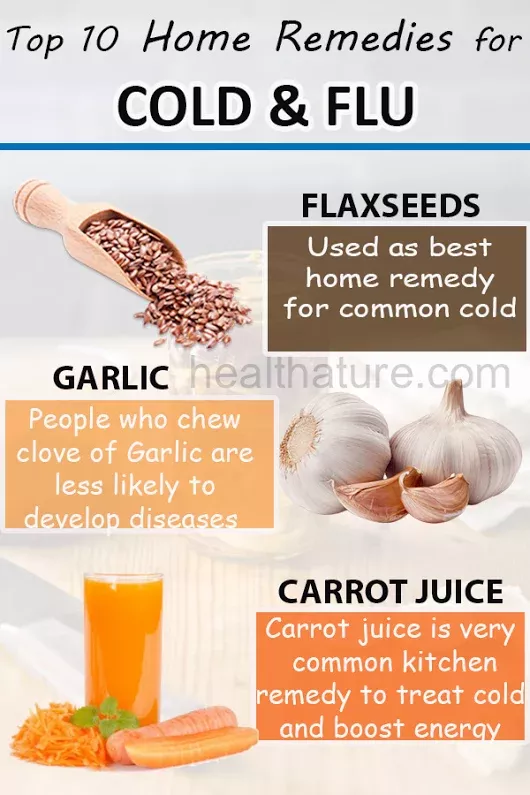
It is tempting to resort to over-the-counter remedies for a common cold or flu. But, rest is probably the best remedy. Moving around can only worsen the symptoms of a sore neck and make it worse. Also, it will help your body recover from the flu-like symptoms. Garlic is a natural remedy for colds and flus. It increases your immune system. Garlic is one of the best natural cures for colds and flu. Garlic has anti-inflammatory properties that can fight the flu virus.
Chicken soup
Researchers at the University of Nebraska examined the effects of chicken broth on white blood cells. They also studied neutrophil movement. They found that the substance had an inhibitory effect on neutrophil migration, which could reduce the symptoms of a cold. The soup also reduced activity in the upper respiratory tract where cold symptoms are common. Research is still needed to establish the medicinal properties of the soup.
Honey
One popular cold and flu remedy that is both tasty and effective is honey. It can be used as a beverage, or added to warm liquids to relieve congestion and soothe the throat. You can ease the symptoms of cold and flu symptoms by adding a teaspoon of honey to a glass full of water. Because honey contains natural anti-inflammatory ingredients, it can help reduce symptoms of colds. To enhance the effect of honey, you can also add 1 teaspoon cinnamon.
Garlic
Garlic supplements can be taken in addition to raw garlic. Both raw and cooked garlic can be used as cold and flu remedies. They have the ability to boost the immune system and relieve cold symptoms. A good night's sleep and adequate hydration can speed up your recovery. To boost your immune system, you may consider taking a zinc supplement. Raw garlic is best. However, there are no scientific studies to support garlic's effectiveness as a cold and/or flu remedy.

Vitamin C
Vitamin C has been around for decades, but it hasn't always been a good remedy for colds. LinusPauling, a Nobel Prize-winning scientist and chemist, suggested that high amounts of vitamin A could prevent colds. Later, however, that claim was disproved. Now, however, researchers are confident that vitamin C can help reduce the duration and frequency of colds. They have evidence to support this assertion.
Hot showers
A hot shower can help with flu symptoms, especially if the body is already dehydrated. Humidity from hot showers enters the mouth and nose, thereby releasing mucus blockages and making you feel better. If you do not have a shower, try creating a mini sauna in your bathroom. You will feel much better after inhaling the steam.
Consume lots of fluids
Drinking plenty of fluids is a great way to get rid of flu symptoms. One, proper hydration can help the body use medications more efficiently, which will result in quicker relief. Adults should consume six to eight glasses of fluids daily. However, you should increase this if you are experiencing symptoms. Electrolyte enhanced beverages are another option. These replenish fluids and can prevent symptoms from getting worse.
Vitamin C can be used to reduce the duration of a common cold or flu.
A recent study has shown that vitamin C consumption can reduce the duration of a flu or cold by as much as 20%. The optimal vitamin C dose has yet to be determined. The reason is that there aren't any studies that have established a dose-response ratio. Numerous trials have demonstrated that higher doses are more effective than single-dose trials of just 1 gram vitamin C.

FAQ
What can I do to boost my immune system?
The human body is composed of trillions if not billions of cells. Each cell is responsible for creating organs and tissues with specific functions. If one cell dies, a new cell takes its place. Hormones, which are chemical signals that allow cells to communicate with one another, enable them to do so. Hormones regulate every bodily process, from growth and development to metabolism as well as immunity.
Hormones can be described as chemicals produced by glands in the body. They are chemicals that travel through the bloodstream and function as messengers to control how our bodies work. Some hormones come from the body and others from outside.
The hormone-producing glands release their contents into bloodstream. This is when hormone production starts. Once hormones have been released, they travel through the body until reaching their target organ. Some hormones are only active for a brief time. Others hormones remain active longer and still have an influence on the body's functioning long after they leave bloodstream.
Some hormones can only be produced in large quantities. Others are produced in small amounts.
Some hormones are made at certain times in our lives. Estrogen is one example. It's produced in puberty, pregnancy and menopause. Estrogen aids women in developing breasts, maintaining bone density and preventing osteoporosis. It promotes hair growth as well as keeping skin soft and smooth.
Why is it important to live a healthy life?
Having a healthy lifestyle helps us live longer, happier lives. Good nutrition, exercise regularly, good sleep habits, stress management and healthy lifestyle can help you avoid heart disease and stroke.
A healthy lifestyle will also improve our mental health by helping us cope better with everyday stresses. Having a healthy lifestyle will also boost our self confidence and help us look and feel younger.
What should I eat?
Get lots of fruits & vegetables. They contain vitamins and minerals which help keep your immune system strong. Vegetables and fruits are high in fiber which helps to digest and fill you up. At least five servings of fruits and vegetables should be consumed each day.
Drink plenty of water. Water flushes out toxins and helps you feel full between meals. Drink about eight glasses each day.
Choose whole grains over refined grains. Whole grains are rich in nutrients such as iron, zinc and magnesium. Some nutrients have been removed from refined grains.
Sugary drinks are best avoided. Sugary drinks are loaded with empty calories and contribute to obesity. Choose water, milk or unsweetened tea instead.
Avoid fast food. Fast food has very little nutritional value. Fast food may be delicious, but it will not give you the energy that you need to perform your tasks properly. Avoid soups, sandwiches and other unhealthy options.
Limit your alcohol consumption. Alcohol contains empty calories and contributes to poor nutrition. Limit your intake of alcohol to two drinks per week.
Red meat consumption should be reduced. Red meats have high levels of cholesterol and saturated fat. Instead, choose lean cuts of beef and pork, lamb, chicken or fish.
Statistics
- According to the 2020 Dietary Guidelines for Americans, a balanced diet high in fruits and vegetables, lean protein, low-fat dairy and whole grains is needed for optimal energy. (mayoclinichealthsystem.org)
- WHO recommends reducing saturated fats to less than 10% of total energy intake; reducing trans-fats to less than 1% of total energy intake; and replacing both saturated fats and trans-fats to unsaturated fats. (who.int)
- This article received 11 testimonials and 86% of readers who voted found it helpful, earning it our reader-approved status. (wikihow.com)
- WHO recommends consuming less than 5% of total energy intake for additional health benefits. (who.int)
External Links
How To
What does the meaning of "vitamin?"
Vitamins are organic compounds found naturally in food. Vitamins are necessary for us to absorb nutrients in the foods we consume. Vitamins cannot be produced by the body. They must be acquired from food.
There are two types if vitamins: water soluble, and fat soluble. Water-soluble vitamins dissolve easily when they are dissolved in water. Vitamin C,B1(thiamine), B2 (2riboflavin), and B3 (3niacin), as well as vitamin C,B1, B2 (riboflavin), and B3 (niacin), vitamin B6 (pyridoxine), vitamin folic acid (biotin), pantothenic, and choline are examples. Fat-soluble vitamins are stored in the liver, fatty tissue and kidneys. Some examples include vitamin D and E, K, A and beta carotene.
Vitamins can be classified according to biological activity. There are eight major categories of vitamins.
-
A - Vital for normal growth and maintaining good health.
-
C - vital for proper nerve function, and energy production.
-
D - Vital for healthy bones and teeth
-
E is needed for good reproduction and vision.
-
K - required for healthy muscles and nerves.
-
P - essential for strong bones, teeth and tendons
-
Q - aids digestion and absorption of iron.
-
R - Required for red blood cell production
The recommended daily allowance of vitamins (RDA), varies according to age, gender, physical condition, and other factors. The U.S. Food and Drug Administration sets RDA values.
For adults 19 years and over, the RDA of vitamin A is 400mg per day. For fetal development, pregnant women need 600 mg per day. Children ages 1-8 require 900 micrograms per day. Infants under one year of age require 700 micrograms per day, but this amount decreases to 500 micrograms per day between 9 months and 12 months of age.
Children between the ages of 1-18 need 800 micrograms per daily for obesity, while children overweight require 1000 micrograms. Children underweight or obese will need 1200 mg per day.
2200 mg of vitamin A per day is required for children aged 4-8 who have been diagnosed by anemia.
2000 micrograms daily is required for adults over 50 to maintain their general health. Breastfeeding or pregnant women require 3000 micrograms per daily due to higher nutrient demands.
Adults over 70 need 1500 micrograms daily, as they lose 10% of their muscle every ten years.
Women who have been pregnant or are lactating require more than the RDA. Pregnant woman need 4000 micrograms daily in pregnancy, and 2500 per day after childbirth. Breastfeeding mothers need to consume 5000 micrograms every day when breastmilk has been produced.